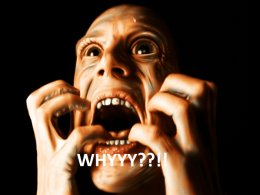Pentcho Valev
2017-05-06 19:23:07 UTC
"Some physicists, however, suggest that there might be one other cosmic factor that could influence the speed of light: quantum vacuum fluctuation. This theory holds that so-called empty spaces in the Universe aren't actually empty - they're teeming with particles that are just constantly changing from existent to non-existent states. Quantum fluctuations, therefore, could slow down the speed of light." https://www.sciencealert.com/how-much-do-we-really-know-about-the-speed-of-light?perpetual=yes&limitstart=1
Be careful, physicists - this is the heresy of heresies. Nothing will remain of both cosmology and Einstein's relativity, no Big Bang, no expansion of the Universe... Shock and horror:
Loading Image...
Assume that, as the photon travels through space (in a STATIC universe), it bumps into vacuum particles and as a result loses speed in much the same way that a golf ball loses speed due to the resistance of the air.
On this hypothesis the resistive force (Fr) is proportional to the velocity of the photon (V):
Fr = - KV
That is, the speed of light decreases with time in accordance with the equation:
dV/dt = - K'V
Clearly, at the end of a very long journey of photons (coming from a very distant object), the contribution to the redshift is much smaller than the contribution at the beginning of the journey. Light coming from nearer objects is less subject to this effect, that is, the increase of the redshift with distance is closer to LINEAR for short distances. For distant light sources we have:
f' = f(exp(-kt))
where f is the initial and f' the measured (redshifted) frequency. (The analogy with the golf ball requires that it be assumed that the speed of light and the frequency vary while the wavelength remains unchanged.) For short distances the following approximations can be made:
f' = f(exp(-kt)) ~ f(1-kt) ~ f - kd/L
where d is the distance between the light source and the observer and L is the wavelength. The equation f'=f-kd/L is only valid for short distances and corresponds to the Hubble law. The equation f'=f(exp(-kt)) shows that, at the end of a very long journey (in a STATIC universe), photons redshift much less vigorously than at the beginning of the journey. This provides an alternative explanation of the observations that brought the 2011 Nobel Prize for Physics to Saul Perlmutter, Adam Riess and Brian Schmidt.
Pentcho Valev
Be careful, physicists - this is the heresy of heresies. Nothing will remain of both cosmology and Einstein's relativity, no Big Bang, no expansion of the Universe... Shock and horror:
Loading Image...
Assume that, as the photon travels through space (in a STATIC universe), it bumps into vacuum particles and as a result loses speed in much the same way that a golf ball loses speed due to the resistance of the air.
On this hypothesis the resistive force (Fr) is proportional to the velocity of the photon (V):
Fr = - KV
That is, the speed of light decreases with time in accordance with the equation:
dV/dt = - K'V
Clearly, at the end of a very long journey of photons (coming from a very distant object), the contribution to the redshift is much smaller than the contribution at the beginning of the journey. Light coming from nearer objects is less subject to this effect, that is, the increase of the redshift with distance is closer to LINEAR for short distances. For distant light sources we have:
f' = f(exp(-kt))
where f is the initial and f' the measured (redshifted) frequency. (The analogy with the golf ball requires that it be assumed that the speed of light and the frequency vary while the wavelength remains unchanged.) For short distances the following approximations can be made:
f' = f(exp(-kt)) ~ f(1-kt) ~ f - kd/L
where d is the distance between the light source and the observer and L is the wavelength. The equation f'=f-kd/L is only valid for short distances and corresponds to the Hubble law. The equation f'=f(exp(-kt)) shows that, at the end of a very long journey (in a STATIC universe), photons redshift much less vigorously than at the beginning of the journey. This provides an alternative explanation of the observations that brought the 2011 Nobel Prize for Physics to Saul Perlmutter, Adam Riess and Brian Schmidt.
Pentcho Valev